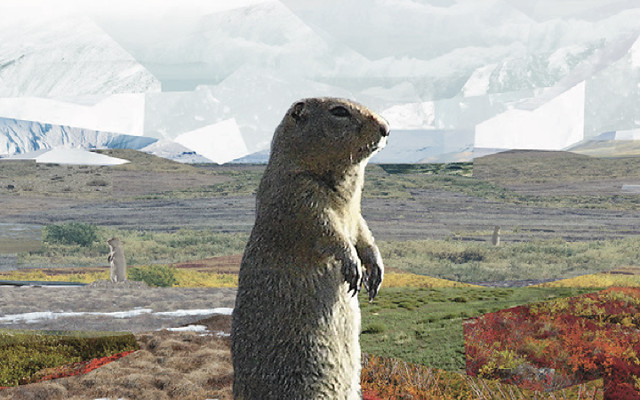The Arctic ground squirrel (Spermophilus parryii or Urocitellus parryii) is a species of ground squirrel native to the Arctic. People in Alaska, particularly around the Aleutians, refer to them as “parka” (pronounced “par’kee”) squirrels, most likely because their pelt is good for the ruff on parkas and for clothing.[2]
The Arctic ground squirrel has a beige and tan coat with a white-spotted back. This squirrel has a short face, small ears, a dark tail and white markings around its eyes. Arctic ground squirrels undergo a coat change from summer to winter. Summer coats include red/yellow colorations along the cheeks and sides of the animal. In fall, these red patches are replaced with silvery fur. The average length of an Arctic ground squirrel is approximately 39 cm (15 in). Since Arctic ground squirrels undergo drastic seasonal changes in body mass, it is difficult[4] to give an average mass, but for adult females it is close to 750 g (26 oz), however, males generally are around 100 g (3.5 oz) heavier than females.[5]
(From Wikipedia, June 2018)




